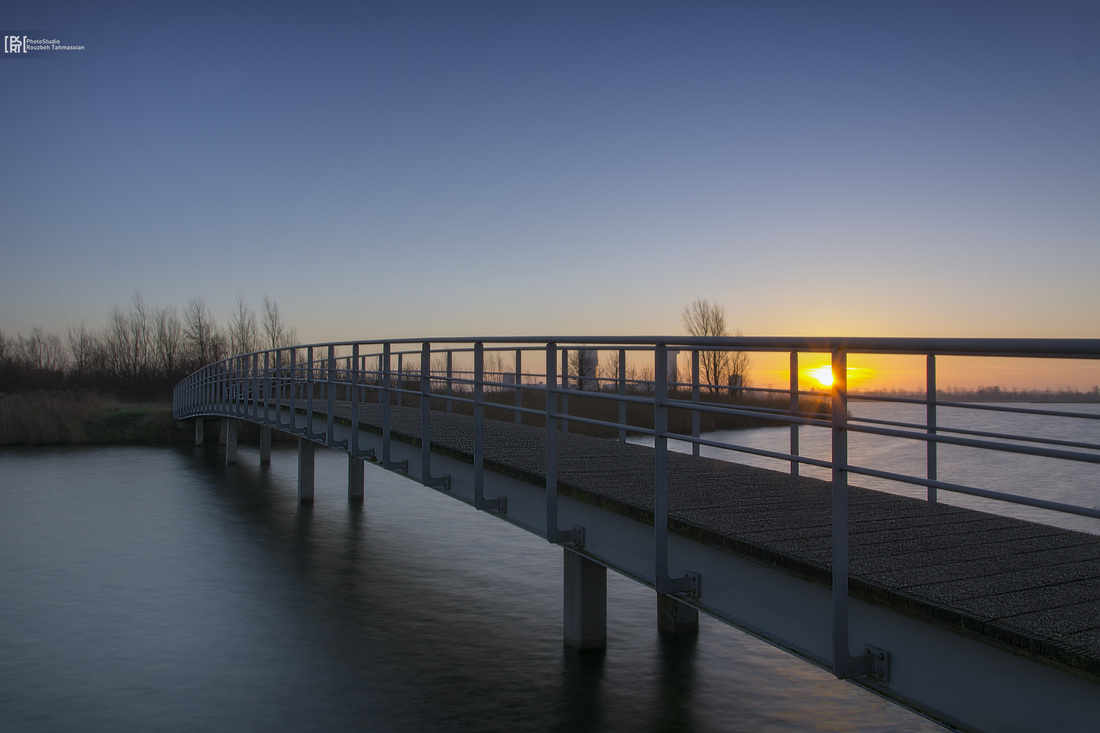The question remains: is there a way to make long exposures without using any filters (ND-filters) during daytime? The answer is obvious or else this tutorial would be meaningless.
So if you like to make those creamy water landscape shots without a filter during daytime, sunset or sunrise keep on reading.
Basic requirements and shooting
The first thing you need to do is to understand the meaning of this technique. Normally when you use a ND filter (4, 6 or big-stopper) you’re stopping light from getting onto your camera sensor and thereby extending your exposure time. This gives you that creamy water or clouds, which is basically the softening of any movement across your frame. This wouldn’t be possible without these filters during daytime.
What you’re looking at is to mimic these long exposures without filters. The purpose is to shoot 5-20 shots with exactly the same exposure conditions (ISO, exposure time and aperture).
The things you really need is a good and sturdy tripod to minimize movement, as also a wired of wireless shutter release. These are essential pieces of equipment. The tripod also needs to be positioned as sturdy as possible. You could use software to align frames afterwards, but this will only extend your normal post-processing time.
Essentially you need to shoot a single shot until you’ve reached the perfect exposure time and aperture, using the lowest possible ISO. I usually use high apertures (> f/22) to get higher exposure times (taking into account this could cause diffraction). Once you’ve got the settings for the single shot, you’ll take 5-20 frames using your tripod and wired/wireless shutter release. Try to use the same delay time between shots. The delay time doesn’t matter a lot as long as you use about the same time between every frame. I just keep counts in my head.
When you get back with 5-20 RAW files it’s time to do the stacking. This means you’ll have to stack all these images on top of each other. I’m not going to compare Lightroom and Photoshop here, but both basically will do the same.
The first step is to open the frames in separate layers in your software-program.
The second step is to set the opacity for each layer in a strict order. The formula you use for this: opacity = 100 x (1/(L+1)), where L stands for number of layers below the current layer.
The layer on the bottom gets a 100% opacity. The opacity of the layers above it are set by the formula, where you could choose to round up or down the numbers.
I’ve calculated the opacity of the first 20 layers for you, rounding down the numbers:
Layer # Opacity
20 5%
19 5%
18 6%
17 6%
16 6%
15 7%
14 7%
13 8%
12 8%
11 9%
10 10%
9 11%
8 12%
7 14%
6 17%
5 20%
4 25%
3 33%
2 50%
1 100%
Once you’ve done this you’ll see a faked ND-filter effect. Because you’ve used these short exposure times (relatively to longer exposure times with filters) you’ll see almost no noise and absolutely no hotspots.
This technique takes time to get used to. Also the post-processing is more extensive. But once you master it, it’s quite fun to do.
Links
It’s obvious I did not make this all up. I’ve read a lot of other tutorials about it. These links I strongly recommend when you are completely new to this stuff.
- http://www.cpburrows.com/how-to-fake-neutral-density-filter-effects/
- http://www.verdantvista.com/tut9


 RSS Feed
RSS Feed